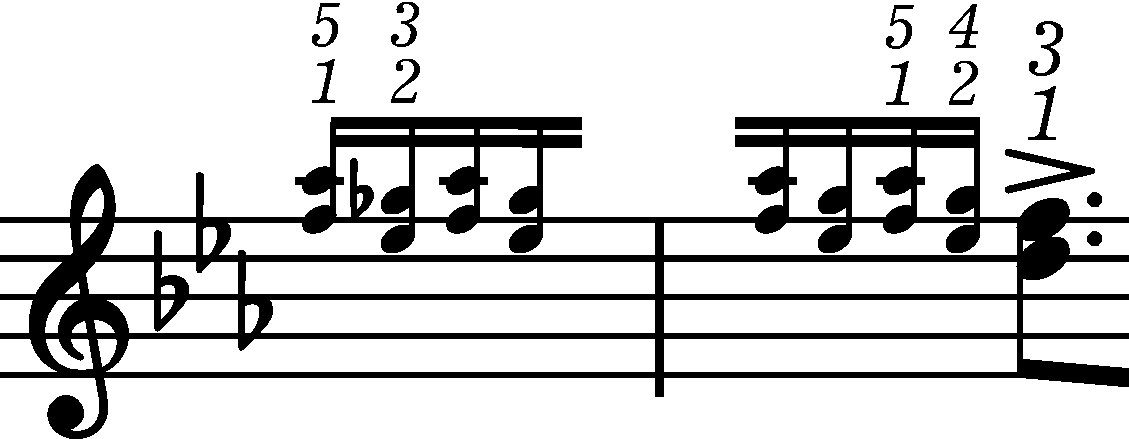



The correctness of the Chopinesque fingering raises serious doubts in this place. For the preceding third trill, Chopin almost certainly envisaged the following fingering:  , confirmed by the authentic fingering of similar configurations of black and white keys in the Barcarolle, Op. 64, b. 24 (the trill in b. 26 in the Barcarolle, the same as the one in the Polonaise, was almost certainly to be performed with the same fingering, since Chopin did not indicate another one there). Assuming an unvarying fingering of the trill, it is most convenient to perform the following d2-f2 third with the fingers 1-4 or 1-5. However, the 2-4 fingering marked in the sources is also possible, yet there is no visible reason why Chopin could have considered it to be worth of indicating. However, the situation would be different if Chopin would have wanted to change the fingering of the ending of the trill, e.g. in the following way:
, confirmed by the authentic fingering of similar configurations of black and white keys in the Barcarolle, Op. 64, b. 24 (the trill in b. 26 in the Barcarolle, the same as the one in the Polonaise, was almost certainly to be performed with the same fingering, since Chopin did not indicate another one there). Assuming an unvarying fingering of the trill, it is most convenient to perform the following d2-f2 third with the fingers 1-4 or 1-5. However, the 2-4 fingering marked in the sources is also possible, yet there is no visible reason why Chopin could have considered it to be worth of indicating. However, the situation would be different if Chopin would have wanted to change the fingering of the ending of the trill, e.g. in the following way:  . The 2-4 fingering over the ending of the trill, hence before the d2-f2 third, would not only be reasonable but also justified in such a case, since it would indicate the moment of departure from the previous scheme. We suggest this version as an alternative solution; in the main text we omit the fingering in this place, since the source version is questionable and the possible corrections – uncertain.
. The 2-4 fingering over the ending of the trill, hence before the d2-f2 third, would not only be reasonable but also justified in such a case, since it would indicate the moment of departure from the previous scheme. We suggest this version as an alternative solution; in the main text we omit the fingering in this place, since the source version is questionable and the possible corrections – uncertain.
category imprint: Editorial revisions
notation: Fingering
Back to note


